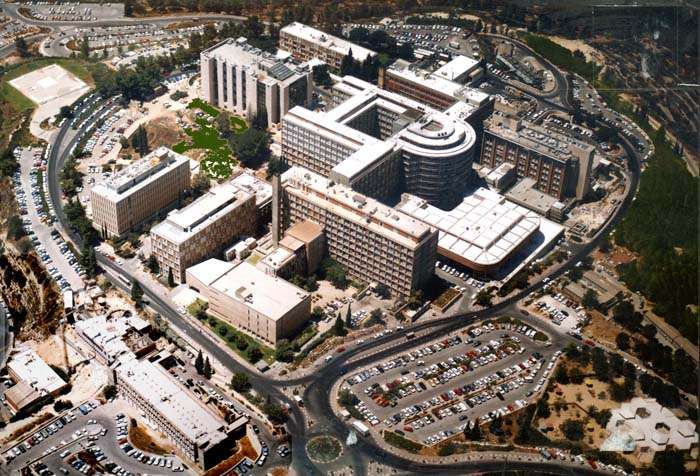Early detection of Melanoma Skin Cancer can save lives

About 10% of newly diagnosed melanoma patients have a family history of the disease
The number of detected skin cancer cases is growing with worrying rates. According to the US National Foundation for Cancer Research (NFCR), over the past three decades, more people have been diagnosed with a form of skin cancer than all other cancers together.
Melanoma is a type of skin cancer that starts in the melanocytes, which are skin cells found in the upper layer of our skin. While it is less common than other skin cancer types ― as it only accounts for 1% of skin cancers ― it causes the majority of skin cancer deaths. This is because of its ability to spread to other organs and parts of the body (metastasize) very quickly if not detected and treated early. Melanoma
The first and most common sign of melanoma is a new mole on the skin – which happens in up to 80% of the cases – or a change in the appearance of an existing one. This may happen anywhere on the body, but the most commonly affected areas are the ones most exposed to the sun. Normal moles usually have round or oval shape with a smooth edge. In most cases of melanoma, moles have an irregular shape and more than one color. Detecting melanoma at an early stage is crucial and makes a significant difference. If detected early – when the cancer is on the surface of the skin – melanoma has exceptional prognosis with a 5-year survival rate of 99%. The survival rate drops to 66% if the disease reaches the lymph nodes, and 27% if it has metastasized to distant organs. In most cases, a questionable mole is usually surgically removed and sent for a biopsy so it can be examined thoroughly.
Certain factors can increase the risk of developing melanoma. The most important risk factor is the exposure to ultraviolet (UV) radiation light coming from the sun. Having many moles, fair skin or freckles may also raise the risk as these individuals are more sensitive to sunlight. Racial identity may also play a role, as melanoma is about 20 times more frequent in Caucasians than Africans. The risk of developing melanoma also rises when having a weakened immune system as a result of medical treatments or conditions. Melanoma is more likely to occur in older people rather than young people; the average age at the time of melanoma diagnosis is 65 years. Also, men have a higher rate of melanoma than women. Gene mutations (changes) are also important risk factors for melanoma skin cancer. Mutations can be either acquired mutations that are caused by environmental factors, or hereditary mutations that exist in a person from birth and can be inherited from a parent. Overall, about 10% of newly diagnosed melanoma patients have a family history of the disease. In these cases, genetic testing can be beneficial as it can identify whether a mutation exists, and what risk factors could be avoided to reduce the risk of cancer developing in the future.
When diagnosed at an early stage, surgery is the main treatment for melanoma. If it is not diagnosed until it has progressed, treatment may include immunotherapy, chemotherapy, radiation therapy and targeted therapy. In the past decade, medicines that are targeted towards specific mutations have been successfully used to slow or stop cancer cells from growing. With the help of modern technologies, scientists are now able to develop vaccines for melanoma. These are currently only given as part of clinical trials, but in the future will be a novel and effective treatment option for melanoma cancer patients.
There is no secure path for melanoma skin cancer prevention. For individuals who have a family history of melanoma, genetic tests for specific gene mutations associated with melanoma can determine whether someone has an increased risk of developing this disease. When spending time outdoors, limiting your exposure to UV rays is the most important way to lower the risk of developing skin cancer. Frequently performing self-skin checks to identify any new or abnormal moles can lead to an early diagnosis and increased chances of a successful treatment. When a change is noticed, informing a healthcare provider as soon as possible can be lifesaving. Raising awareness and educating society regarding the risk factors and warning signs of melanoma is the best tool to prevent and reduce the number of skin cancers.
PreSENTIA and ForeSENTIA cancer tests, offered by NIPD Genetics, can detect numerous genetic changes. PreSENTIA offers an extensive portfolio of 19 hereditary cancer test panels for identifying mutations with cancer susceptibility. ForeSENTIA offers an extensive portfolio of 7 cancer panels for wide coverage of genes implicated in specific cancer types. To learn more please visit www.nipd.com.
The content is intended only for educational purposes and should not be perceived as medical advice.
Compiled using information from:
-American Cancer Society. [https://www.cancer.org/cancer/melanoma-skin-cancer.html]
-Skin Cancer Foundation. [https://www.skincancer.org/skin-cancer-information/melanoma/melanoma-treatments/]
-NHS, Skin Cancer (melanoma). [https://www.nhs.uk/conditions/melanoma-skin-cancer/]
-World Cancer Research Fun, Skin cancer statistics. [https://www.wcrf.org/dietandcancer/skin-cancer-statistics/]
-National Foundation for Cancer Research, 9 Must-Know Facts About Sunscreen. [https://www.nfcr.org/blog/9-must-know-facts-about-sunscreen/]
-National Foundation for Cancer Research, Therapeutic Vaccines Showed Long-term Anti-Cancer Effects for Melanoma. [https://www.nfcr.org/blog/therapeutic-vaccines-showed-long-term-anti-cancer-effects-for-melanoma-2021-mw/]
-National Foundation for Cancer Research, Skin Cancer Awareness Month: Be Proactive, Reduce Your Risk. [https://www.nfcr.org/blog/skin-cancer-awareness-month-be-proactive-reduce-your-risk/]
-Centers for Disease Control and Prevention, Melanoma of the Skin Statistics. [https://gis.cdc.gov/Cancer/USCS/DataViz.html]







